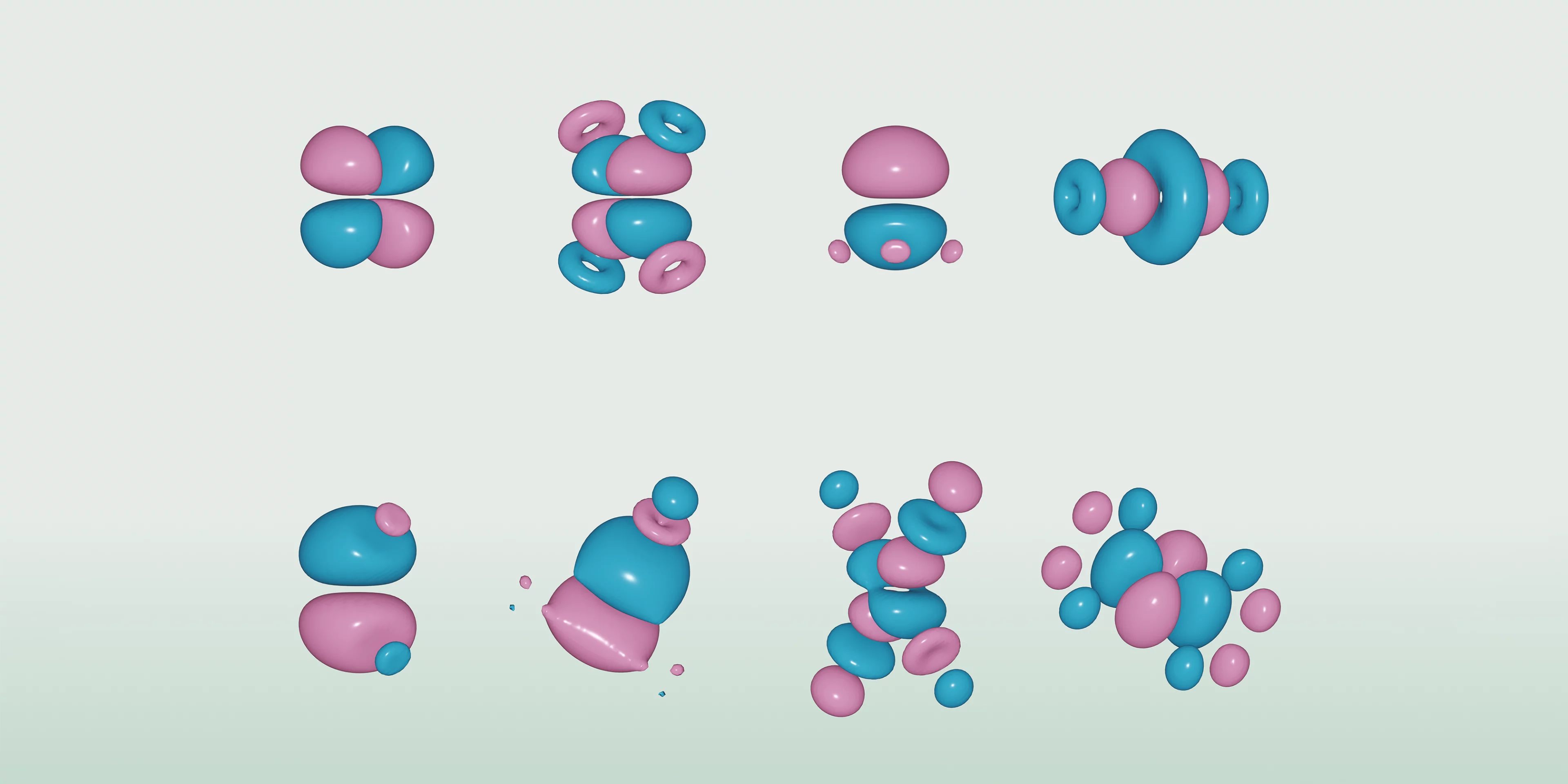A new review article, just published in Reviews of Modern Physics and highlighted on the journal cover, provides a map to the vast landscape of software codes that allow researchers to calculate Wannier functions, and to use them for materials properties predictions. The authors, from all over Europe and the USA, include two PSI scientists. After providing readers with the theoretical foundations on Wannier functions and their calculation, together with intuitive graphical schematics to explain what Wannier functions are, the authors map the existing Wannier codes and the key applications.
Wannier functions play an essential role in theoretical physics and computational materials science: first introduced by Swiss physicist Gregory Wannier in 1937, they allow to represent the electronic structure of a solid as a set of intuitive localized orbitals that electrons can occupy, in contrast with the “standard” quantum mechanics view that describes electrons in a solid as delocalized periodic states called Bloch states. Having a localized representation has key advantages when it comes to calculating or understanding many properties — from chemical bonding to polarization and magnetization, from conductivity to topological invariants — but for a long time there were no general solutions to this task, and so Wannier functions saw little practical applications. Thanks to the introduction of maximally-localized Wannier functions by Marzari and Vanderbilt in 1997, and the algorithms and codes to calculate these in actual materials, they are nowadays a much used tool for computational condensed matter physics and materials science.
A key decision was made earlier on of establishing a well defined protocol of communication to allow any electronic-structure code, open-source or proprietary, and independently of its internal architecture and basis set, to handshake with code(s) that calculated Wannier functions. This has led, over the years, to a rich ecosystem of codes that calculate Wannier functions or that calculate materials properties using Wannier functions. The landscape has grown so vast – thanks to both theoretical advancements and these concerted developments of accessible and efficient software – that a newcomer to the field would greatly benefit from a map to navigate it. A new review article, just published in Reviews of Modern Physics and highlighted on the journal cover, finally provides precisely that. The list of the ten authors, from all over Europe and the USA, includes prof. Nicola Marzari, head of the LMS lab, and Giovanni Pizzi, group leader in LMS.
After providing readers with the theoretical foundations on Wannier functions and their calculation, together with intuitive graphical schematics to explain what Wannier functions are, the authors map the existing Wannier codes by grouping them into three major categories: Wannier engines, that are used to obtain Wannier functions in the first place; interface codes that allow Wannier engines and first-principles tools such as DFT or GW codes to work together; and Wannier-enabled codes, that use Wannier functions as the main ingredient to accelerate accurate simulations. “As a useful byproduct of the review paper, a new online Wannier ecosystem registry has been launched and is available at https://wannier-developers.github.io/wannier-ecosystem-registry. This registry lists the codes in the ecosystem and it can be dynamically updated as more codes appear.” says Giovanni Pizzi, last author of the review.
The article describes the key applications of the codes in the Wannier ecosystem that span a wide area of computational materials science and condensed-matter physics – including band interpolation and large-scale simulations, electronic transport, Berry-phase properties, topology, electron-phonon couplings, dynamical mean-field theory, embedding, and Koopmans functionals. The authors also describe automation workflows that combine multiple software packages to take care of all the steps from the initial first-principles calculations to the Wannier-engine executions to the post-processing steps, while parsing the outputs and generating new inputs.
The article concludes with a look at the future of the field and underscores the need to maintain enough “biodiversity” in the Wannier ecosystem: the coexistence of multiple software packages with partially overlapping functionalities, the authors write, helps increase robustness and allows for the cross-verification of codes. For this, “it is crucial to support the individual developers who contribute to the Wannier ecosystem and to establish structural mechanisms that ensure they receive proper scientific recognition for their work”, says Giovanni Pizzi.
You can read the full scientific highlight article on the NCCR MARVEL website.
Paper reference: A. Marrazzo, S. Beck, E. Margine, N. Marzari, A. Mostofi, J. Qiao, I. Souza, S. Tsirkin, J.R. Yates, G. Pizzi, "Wannier-function software ecosystem for materials simulations", Reviews of Modern Physics 96, 045008 (2024). https://doi.org/10.1103/RevModPhys.96.045008


